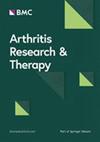基于人工智能的雷诺氏量化指数(ARTIX):一种以患者为中心评估雷诺氏现象的客观移动工具
IF 4.6
2区 医学
Q1 Medicine
引用次数: 0
摘要
我们的目标是开发一种能够从手机摄影中评估雷诺现象(RP)的人工智能算法,确保作为一种以患者为中心、基于图像的RP量化方法。ARTIX(基于人工智能的雷诺量化指数)评分是一个多步骤的分割、分解和滤波过程,应用于手的手机图片。ARTIX通过评估原发性和继发性RP患者以及健康对照(HC)的手指对标准化冷挑战的反应的能力得到验证,并与热成像作为参考进行比较。纳入了45例RP患者(91.1%为女性,平均年龄52.2岁,75.5%为继发性RP),以及22例年龄和性别相当的HC。RP患者在基线(p < 0.001)和所有冷刺激时间点(p < 0.01)的ARTIX值均显著低于HC患者,与热成像观察到的类似显著差异相似。男性和服用血管活性药物的患者ARTIX评分较高,而毛细血管镜模式晚期、弥漫性皮肤亚群或抗着丝粒抗体阴性的患者ARTIX评分较低。ARTIX还表现出较好的区分RP和HC对冷挑战反应的能力。我们开发并验证了ARTIX,一种新的机器学习驱动的RP客观量化方法。RP患者的真实纵向研究将确定ARTIX的价值,以补充患者RP活动和严重程度的自我评估替代措施。本文章由计算机程序翻译,如有差异,请以英文原文为准。
Artificial intelligence-based Raynaud’s quantification index (ARTIX): an objective mobile-based tool for patient-centered assessment of Raynaud’s phenomenon
We aimed to develop an artificial intelligence algorithm able to assess Raynaud’s phenomenon (RP) from mobile phone photography, ensuring as a patient-centered, image-based method for RP quantification. ARTIX (artificial intelligence-based Raynaud’s quantification index) score was developed as a multi-step process of segmentation, decomposition and filters application to mobile phone pictures of the hand. ARTIX was validated by the ability to assess finger response to standardised cold challenge in patients with primary and secondary RP and healthy controls (HC) and compared with thermography as a reference. Forty-five RP patients (91.1% female, mean age 52.2 years, 75.5% secondary RP) were enrolled, along with 22 HC comparable for age and gender. RP patients presented significantly lower ARTIX values than HC both at baseline (p < 0.001) and across all timepoints of the cold challenge (p < 0.01 for all), paralleling a similarly significant difference observed by thermography. ARTIX score was higher in males and in patients taking vasoactive drugs, whereas lower values were obtained in patients with late capillaroscopic pattern, diffuse cutaneous skin subset, or negative for anti-centromere antibodies. ARTIX showed also good ability to discriminate between RP and HC response to cold challenge. We developed and validated ARTIX, a novel machine learning-driven method for the objective quantification of RP. Real-life longitudinal studies in patients with RP will determine the value of ARTIX to complement patient self-assessment surrogate measures of RP activity and severity.
求助全文
通过发布文献求助,成功后即可免费获取论文全文。
去求助
来源期刊

Arthritis Research & Therapy
RHEUMATOLOGY-
CiteScore
8.60
自引率
2.00%
发文量
261
审稿时长
14 weeks
期刊介绍:
Established in 1999, Arthritis Research and Therapy is an international, open access, peer-reviewed journal, publishing original articles in the area of musculoskeletal research and therapy as well as, reviews, commentaries and reports. A major focus of the journal is on the immunologic processes leading to inflammation, damage and repair as they relate to autoimmune rheumatic and musculoskeletal conditions, and which inform the translation of this knowledge into advances in clinical care. Original basic, translational and clinical research is considered for publication along with results of early and late phase therapeutic trials, especially as they pertain to the underpinning science that informs clinical observations in interventional studies.
 求助内容:
求助内容: 应助结果提醒方式:
应助结果提醒方式:


